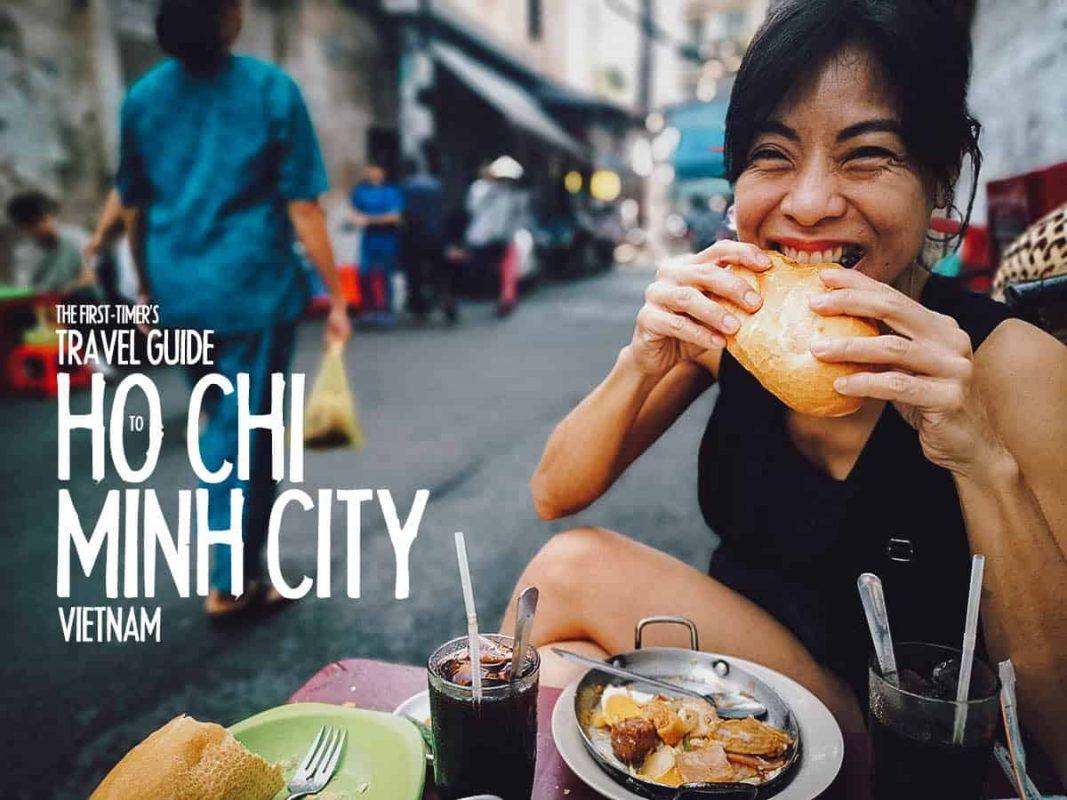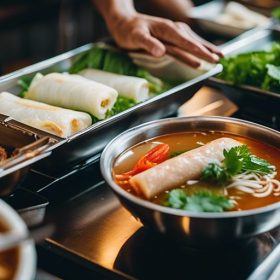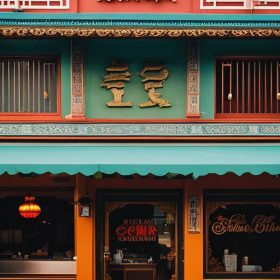Vietnam’s culinary scene is a vibrant and diverse tapestry of flavors, textures, and aromas. From the bustling streets of Hanoi to the vibrant markets of Ho Chi Minh City, the country offers a plethora of culinary delights waiting to be explored. While many tourists may be tempted to stick to familiar dishes or dine at tourist-friendly establishments, the true essence of Vietnamese cuisine lies in its local eateries. These hidden gems offer an authentic and immersive experience that allows visitors to truly understand and appreciate the rich culinary heritage of Vietnam.
Will Fly for Food
Planning a culinary trip to Vietnam requires careful consideration and research. To make the most of your experience, it is important to plan ahead and prioritize the dishes and drinks you want to try. Some must-try dishes include pho, a flavorful noodle soup; banh mi, a delicious Vietnamese sandwich; and bun cha, a grilled pork dish served with noodles and herbs. For drinks, don’t miss out on trying Vietnamese coffee, which is known for its strong flavor and unique brewing method using a drip filter.
Discovering Authentic Vietnamese Cuisine Beyond the Tourist Trail
While it may be tempting to stick to popular tourist areas, venturing off the beaten path is essential for discovering the true essence of Vietnamese cuisine. By exploring local neighborhoods and seeking out hidden gems, you can experience the flavors and traditions that have been passed down through generations. To find these hidden gems, consider asking locals for recommendations or using online resources such as food blogs or review websites.
A Taste of Vietnam: Exploring the Country’s Regional Specialties
Vietnam’s regional cuisine is as diverse as its landscape. Each region has its own unique flavors and specialties that reflect the local ingredients and cultural influences. In the north, you will find dishes such as bun cha and cha ca, which are famous in Hanoi. Central Vietnam is known for its delicate and flavorful dishes, including banh xeo and cao lau. In the south, you can indulge in dishes like banh mi and hu tieu. Exploring the regional specialties of Vietnam is a culinary journey that will take you through a range of flavors and culinary traditions.
From Street Food to Fine Dining: Vietnam’s Diverse Dining Scene
Vietnam offers a diverse range of dining options, from humble street food stalls to upscale fine dining establishments. Street food is an integral part of Vietnamese culture and offers a unique and authentic dining experience. Some popular street food dishes include pho, banh mi, and com tam. On the other end of the spectrum, Vietnam also boasts a growing fine dining scene, with restaurants that offer innovative and modern interpretations of traditional Vietnamese cuisine. Whether you choose to dine on the streets or in a fancy restaurant, Vietnam’s dining scene has something to offer for every palate.
Uncovering the Secrets of Vietnam’s Best Pho and Banh Mi
Pho and banh mi are two iconic Vietnamese dishes that have gained international recognition. Pho is a fragrant noodle soup that is typically made with beef or chicken, while banh mi is a delicious sandwich filled with various ingredients such as grilled meats, pate, and pickled vegetables. To truly experience the best pho and banh mi in Vietnam, it is important to visit local eateries that have perfected these dishes over generations. Some recommended places to try pho include Pho Gia Truyen in Hanoi and Pho Hoa Pasteur in Ho Chi Minh City. For banh mi, Banh Mi 25 in Hoi An and Banh Mi Huynh Hoa in Ho Chi Minh City are highly recommended.
Exploring the Mekong Delta: The Heart of Vietnamese Cuisine
The Mekong Delta region is often referred to as the “rice bowl” of Vietnam and is known for its fertile lands and abundant produce. The region’s cuisine is characterized by its use of fresh ingredients, such as fish, shrimp, and tropical fruits. Some popular dishes from the Mekong Delta include ca kho to (caramelized fish in clay pot), banh xeo (Vietnamese pancake), and hu tieu nam vang (Cambodian-style noodle soup). Exploring the Mekong Delta is not only a culinary adventure but also an opportunity to immerse yourself in the vibrant culture and natural beauty of the region.
Hanoi’s Hidden Culinary Treasures: The Best Local Eateries
Hanoi, the capital city of Vietnam, is a food lover’s paradise. The city is known for its rich culinary heritage and offers a wide range of local eateries that serve authentic and delicious dishes. Some hidden culinary treasures in Hanoi include Bun Cha Huong Lien, where you can try the same dish that former President Barack Obama famously enjoyed during his visit to Vietnam, and Cha Ca La Vong, which specializes in grilled fish with turmeric and dill. These local eateries offer a glimpse into the traditional flavors and techniques that have been passed down through generations.
Saigon’s Street Food Scene: A Gastronomic Adventure
Ho Chi Minh City, also known as Saigon, is a bustling metropolis that offers a vibrant street food scene. From busy street corners to bustling markets, you can find an array of delicious and affordable street food options in Saigon. Some must-try dishes include banh mi, com tam (broken rice), and banh xeo (Vietnamese pancake). To truly experience Saigon’s street food scene, head to popular areas such as Ben Thanh Market or Nguyen Hue Street, where you can find a wide variety of street food stalls serving up mouthwatering dishes.
Central Vietnam’s Culinary Delights: Hue, Hoi An, and Beyond
Central Vietnam is home to two culinary gems: Hue and Hoi An. Hue, the former imperial capital, is known for its royal cuisine, which features intricate and flavorful dishes. Some popular dishes from Hue include bun bo Hue (spicy beef noodle soup) and banh khoai (Hue-style pancake). Hoi An, on the other hand, is famous for its street food scene and its signature dish, cao lau (noodle dish with pork and herbs). Beyond these two cities, central Vietnam also offers a range of culinary delights, including mi quang (turmeric-infused noodle dish) in Quang Nam and banh canh cua (crab noodle soup) in Da Nang.
Why Vietnam’s Hidden Gems Should Be on Every Foodie’s Bucket List
Exploring local eateries in Vietnam is not only a culinary adventure but also an opportunity to immerse yourself in the rich culture and traditions of the country. From the bustling streets of Hanoi to the vibrant markets of Ho Chi Minh City, Vietnam offers a wide range of culinary delights waiting to be discovered. By venturing off the beaten path and seeking out hidden gems, you can experience the true essence of Vietnamese cuisine and create memories that will last a lifetime. So, add Vietnam’s hidden gems to your culinary travel list and embark on a gastronomic journey like no other.

Cuong Nguyen is a talented writer and experienced waitress at Vietnampalace.net, a renowned Vietnamese restaurant that offers an extensive menu of authentic Vietnamese cuisine. With a background in the competition of Vietnamese cuisine, Cuong brings a wealth of knowledge and expertise to the dining experience. From delicious pho dishes to fresh spring rolls, Cuong ensures that every meal is made with the freshest ingredients and authentic flavors.With exceptional service and a friendly atmosphere, Cuong takes pride in providing a memorable dining experience for every customer.
Whether you’re a vegetarian looking for options or a meat lover craving the flavors of traditional Vietnamese dishes, Cuong guarantees a delightful culinary adventure. So, visit Vietnampalace.net and let Cuong guide you through the tantalizing world of Vietnamese cuisine.



